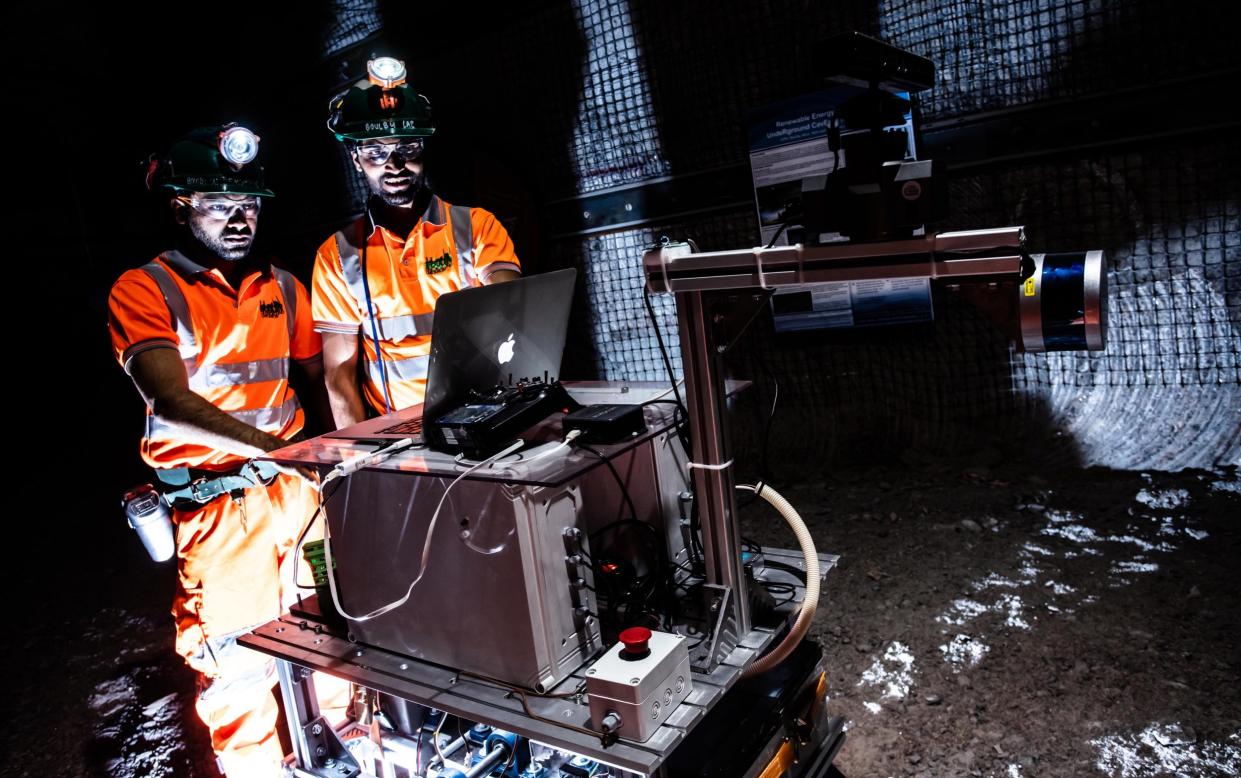How a Yorkshire mine could hold key to life on Mars

Mars is being recreated a mile beneath Yorkshire, as scientists practise how to live, and carry out medical procedures away from Earth.
Researchers at the University of Birmingham will be setting up base in the remote and isolated tunnels of the Polyhalite mine, near Staithes, on the North East coast of England.
A deep underground science lab was built at the mine in 2001 to help in the search for dark matter as it is secluded enough to be shielded from radiation bombarding the Earth.
But the salty, dark conditions in the underground chambers also mimic conditions on Mars and in the past astrobiologists have ventured into the tunnels seeking microbes that could hint at what life might look like on the Red Planet.
Now, scientists are using the subterranean caverns to recreate the operational conditions astronauts would experience in similar caves on the Moon or Mars.
The team will be forced to work cut off from the surface and with limited access to new materials or equipment.
The isolated location will also enable scientists to investigate how effective underground habitats are at protecting space crews from deep-space radiation and dealing with other hazards, such as falling debris from meteorites, which risks damaging the life-support systems.
Cosmic radiation and extreme temperatures are some of the biggest dangers on Mars and the Moon, so the first bases could be built in caves or lava tubes for protection.

Lead researcher Dr Alexandra Iordachescu, of the University of Birmingham’s School of Chemical Engineering, said: “This new capability will help to gather information that can advise on the life support systems, devices and biomaterials which could be used in medical emergencies and tissue repair following damage in deep-space missions.
“These types of metrics can guide system design and help to assess the scientific needs and acceptable timeframes in bioengineering operations under the constraints of isolated environments, such as space habitats.
“The data is likely to bring numerous benefits for Earth-based applications as well, such as delivering biomedical interventions in remote areas or in hazardous environments and more generally, understanding biomedical workflows in these non-ideal environments.”
The first facility to be opened as part of Bio-Sphere (Biomedical Sub-surface Pod for Habitability and Extreme-environments Research in Expeditions), is a 10ft-wide module designed specifically to test biomedical procedures needed for treating tissue damage.
The team will be testing fluids, polymers and hydrogels which could be used for both healing wounds and as fillers if the pod gets damaged.
The pod is just the first in a series of labs which will study how humans might work and stay healthy during long space missions. The team recently published plans for a six-module off-world habitat which included pods for tissue engineering, cell banking, surgery and recovery.
Medical facilities are crucial for venturing further into space because lengthy journeys through microgravity lead to tissue degeneration and make astronauts more susceptible to injury.
The team said that the recent launch of the Artemis 1 mission, which will eventually take humans back to the Moon, has made a mission to Mars “increasingly feasible”.
Researchers will also be investigating how the local pressure, temperature and geology can be harnessed to help with constructing the modules
Prof Sean Paling, director and senior scientist at the Boulby Underground Laboratory, said: “The challenges ahead for humankind in exploring habitats beyond Earth are clearly many and significant.
“The Bio-Sphere project promises to help answer some key logistical questions in establishing sustainable living conditions in remote, subterranean environments and in doing so will significantly contribute to the essential preparations for our collective long, difficult and exciting journey ahead.
“It is also a great example of the diverse range of scientific studies that can be carried out in a deep underground science facility, and we are very happy to be hosting it.”

 Yahoo News
Yahoo News 
